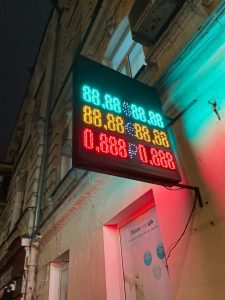Forex trading is an exciting and potentially lucrative activity that requires a lot of careful planning and accurate execution. One of the most important aspects of forex trading is the calculation of the number of lots that you need to trade, as this will determine the amount of risk you are taking on and the potential profit or loss you could make.
So, what exactly are forex lots? In the forex market, a lot refers to a standardized unit of currency trading. The size of a lot varies depending on the currency pair being traded, but typically a standard lot is 100,000 units of the base currency. However, there are also mini and micro lots available, which are 10,000 and 1,000 units respectively.
Calculating the number of forex lots you need to trade is a relatively simple process that involves a few key factors. These include the amount of money you have available to trade, the currency pair you want to trade, and the level of risk you are comfortable with.
To calculate the number of forex lots you need to trade, follow these steps:
Step 1: Determine your account balance
The first step in calculating the number of lots you need to trade is to determine your account balance. This is the amount of money you have available to trade in your forex account.
For example, if you have $10,000 in your trading account, this is your starting point for calculating the number of lots you can trade.
Step 2: Determine your risk per trade
The next step is to determine how much risk you are willing to take on for each trade. This will depend on your overall trading strategy and the amount of risk you are comfortable with.
A common rule of thumb is to risk no more than 2% of your account balance on any one trade. So, if you have a $10,000 account balance, your maximum risk per trade would be $200.
Step 3: Determine your stop loss level
The next step is to determine your stop loss level. A stop loss is a pre-determined level at which you will exit the trade if the market moves against you. This is an important risk management tool that helps to limit your losses.
Your stop loss level will depend on the currency pair you are trading and your overall trading strategy. A common approach is to set your stop loss at a level where you would exit the trade if the price moves against you by a certain percentage, such as 1% or 2%.
Step 4: Calculate your position size
Now that you have determined your account balance, risk per trade, and stop loss level, you can calculate your position size. This is the number of lots you need to trade to stay within your risk tolerance.
To calculate your position size, you can use a forex position size calculator, which is readily available online. This tool will ask you to input your account balance, risk per trade, stop loss level, and the currency pair you want to trade. It will then calculate the number of lots you need to trade to stay within your risk tolerance.
For example, if you have a $10,000 account balance, a maximum risk per trade of $200, and a stop loss level of 2%, and you want to trade the EUR/USD currency pair, a position size calculator might tell you that you need to trade 2.5 standard lots.
In conclusion, calculating the number of forex lots you need to trade is a crucial step in forex trading. By taking into account your account balance, risk per trade, and stop loss level, you can determine the appropriate position size to stay within your risk tolerance and maximize your potential profits. By using a forex position size calculator, you can quickly and easily calculate the number of lots you need to trade, taking the guesswork out of this important aspect of forex trading.





